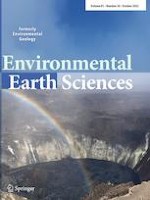01.10.2022 | Thematic Issue
Integration of group method of data handling (GMDH) algorithm and population-based metaheuristic algorithms for spatial prediction of potential groundwater
Erschienen in: Environmental Earth Sciences | Ausgabe 20/2022
EinloggenAktivieren Sie unsere intelligente Suche, um passende Fachinhalte oder Patente zu finden.
Wählen Sie Textabschnitte aus um mit Künstlicher Intelligenz passenden Patente zu finden. powered by
Markieren Sie Textabschnitte, um KI-gestützt weitere passende Inhalte zu finden. powered by
